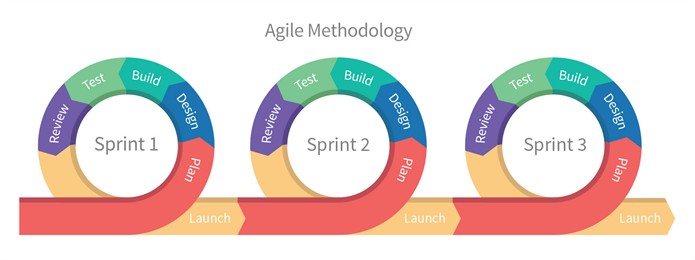If your company is outsourcing work to an external team, it can throw a spanner in the works for traditional project management practices. Here are some tips to get you by.
1) Go Agile
The Agile methodology is something which gets thrown about a lot and it’s true that it’s become something of a buzzword. But that doesn’t mean it’s without great value. Agile sheds more traditional project management practices, such as waterfall, and replaces it with a far more flexible, higher quality and often speedier alternative. But how can you actually implement an agile process in your outsourced project?
1. Break the project down into many small tasks
This will require technical know-how of course, but the exact parameters of a task are up to your discretion. A task can cover anything from UI to the preparing of servers for hosting – as long as it’s adding value to the deliverable, that’s the key. Define all of these tasks in whichever project management tools you use and invite your outsourced developers into the application.

2. Assign a fortnight to a month’s worth of tasks (a sprint)
A sprint is a series of tasks to be completed by your team members over a period that generally spans 2-4 weeks. At the end of each sprint, your goal is to have completed as many, if not all the tasks assigned (obviously) and also to ensure that your project is in some kind of deliverable state. If all the money in the project dried up and you could only get yourself to the end of the current sprint, would you be able to push new changes to the customer? You should always strive to answer that with a “Yes”.
3. Continually analyse and discuss roadblocks
Once each sprint is completed, you’ll not only need to assign the new sprint but have a long and fruitful discussion with the team about what worked, what didn’t and what was a categoric disaster! Spend a few hours on this, you’ll be surprised at how much you yourself will learn as well as aiding your team and preparing them to overcome new challenges in forthcoming sprints. This same mentally should be continued through all sprints on a daily basis if possible, though keeping any discussions short or confined to text chats will prevent it from becoming the only thing you do.
Interested in outsourcing your project and project management? Use the form below
[contact-form to=”mdaniel@handymaninteractive.com” subject=”Enquiry about outsourcing projects and project management.”][contact-field label=”Name” type=”name” required=”1″][contact-field label=”Email” type=”email” required=”1″][contact-field label=”Website” type=”url”][contact-field label=”Message” type=”textarea” required=”1″][/contact-form]
2) Use comprehensive project management tools
A good worker may never blame his tools, but that doesn’t mean that they should neglect them. Using the right tools is key to working with remote workers efficiently and positively. Many of these tools centred around remote work encourage agile methodologies (because agile and outsourcing go hand in hand), so be a little prepared if this is your first outing into agile. Here is a selection of tools we’ve found work well when outsourcing developers, but there’ll be many more out there. It’ll take some time to find the right combination of apps and platforms that work best for you, but the trick is once you’ve found them to stick with them!
Task management tools
Communication tools
- Slack
- Mattermost (Self-hosted)
- Stride (formerly Hipchat)
- Hangouts
3) Organise regular video calls
In case you hadn’t picked up on it already, communication is paramount to a successful outsourced project. And it’s not there just to keep tabs on your team, to assign tasks or to help them overcome problems (as mentioned above in the agile section) but to convey your company’s culture and your vision. It’s often easy to overlook things like this, but you would be surprised how big a difference it can make to the work ethic and values that your outsourced team exhibit. Because of this, as well as many of the reasons stated earlier in the article, get a regular video conference going where you can chat about more than just agile sprints – it’ll make a world of difference and help in more ways than you might think. Aim for a monthly video conference with as many of the team as possible, include everyone!
Not sure if outsourcing is for you? Check out our post on ways to expand your dev resources.
4) Share your resources
This one may seem obvious, but it’s surprising how often it’s neglected. Share with your external teams exactly what you would share with your internal teams. If anything, there’s more of an argument to share with external teams because they’re not in your offices absorbing your rhetoric, meaning they’ll need more material than your internal team. You can use popular document repositories such as Google Drive and Dropbox to keep things simple and ubiquitous, and on them, host things such as:
- Specifications
- Mockups
- Designs
- Email correspondence
- Roadmaps
5) Define consistent workflows
The last point to cover here is more appropriate for long-term engagements with the same outsourced team, and it can help to make your processes flow quicker and smoother when undertaking new projects. I mentioned it briefly earlier, but sticking to a defined set of tools and using them in the same way from project to project can greatly improve success rates. It makes sense, but can be overlooked somewhat. Keep it in mind when working with the same team on multiple projects.
I hope this has been an insightful post on project managing outsourced teams. If it’s been useful to you or you want to share any experiences, please, by all means, leave a comment below!
